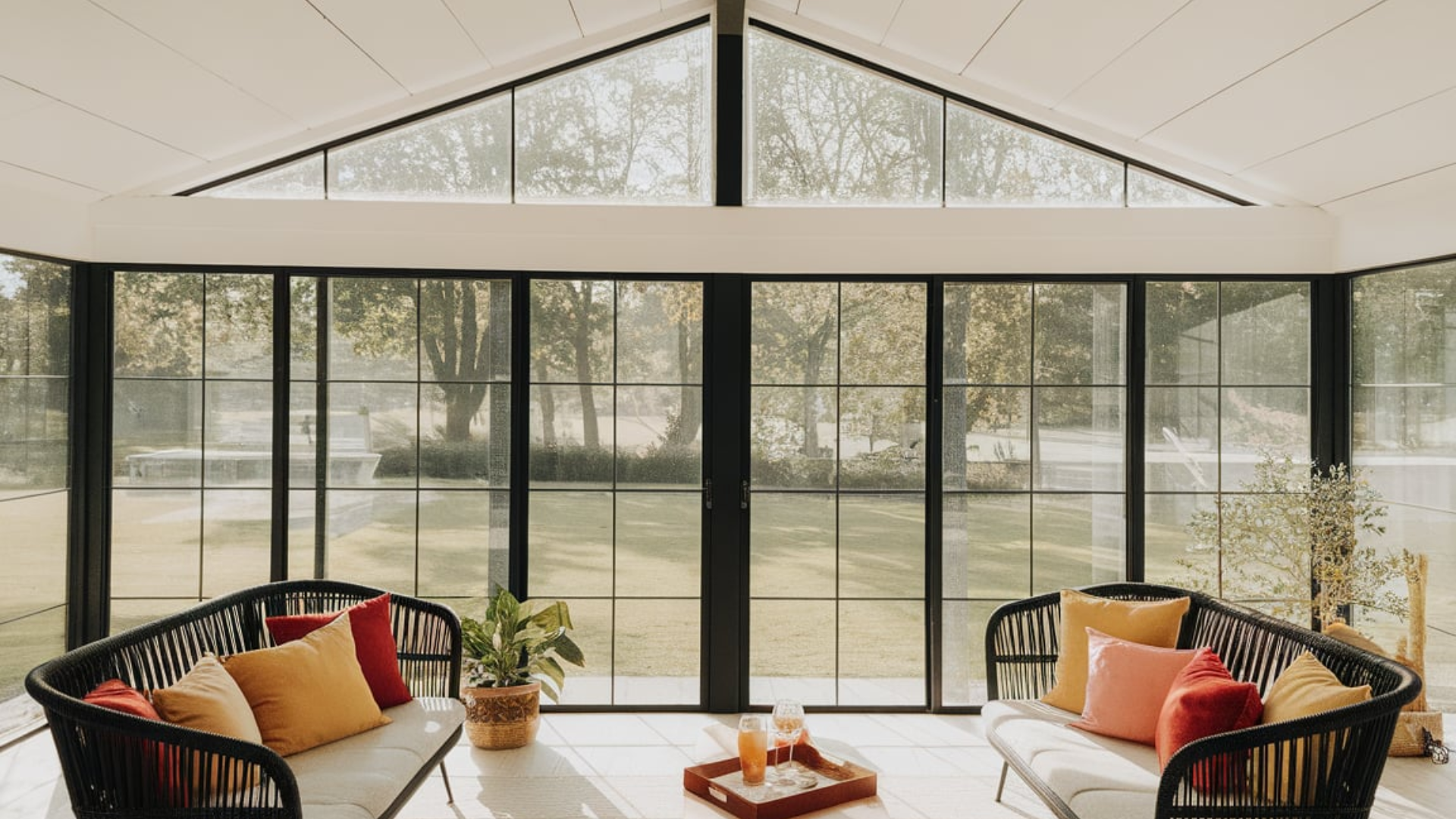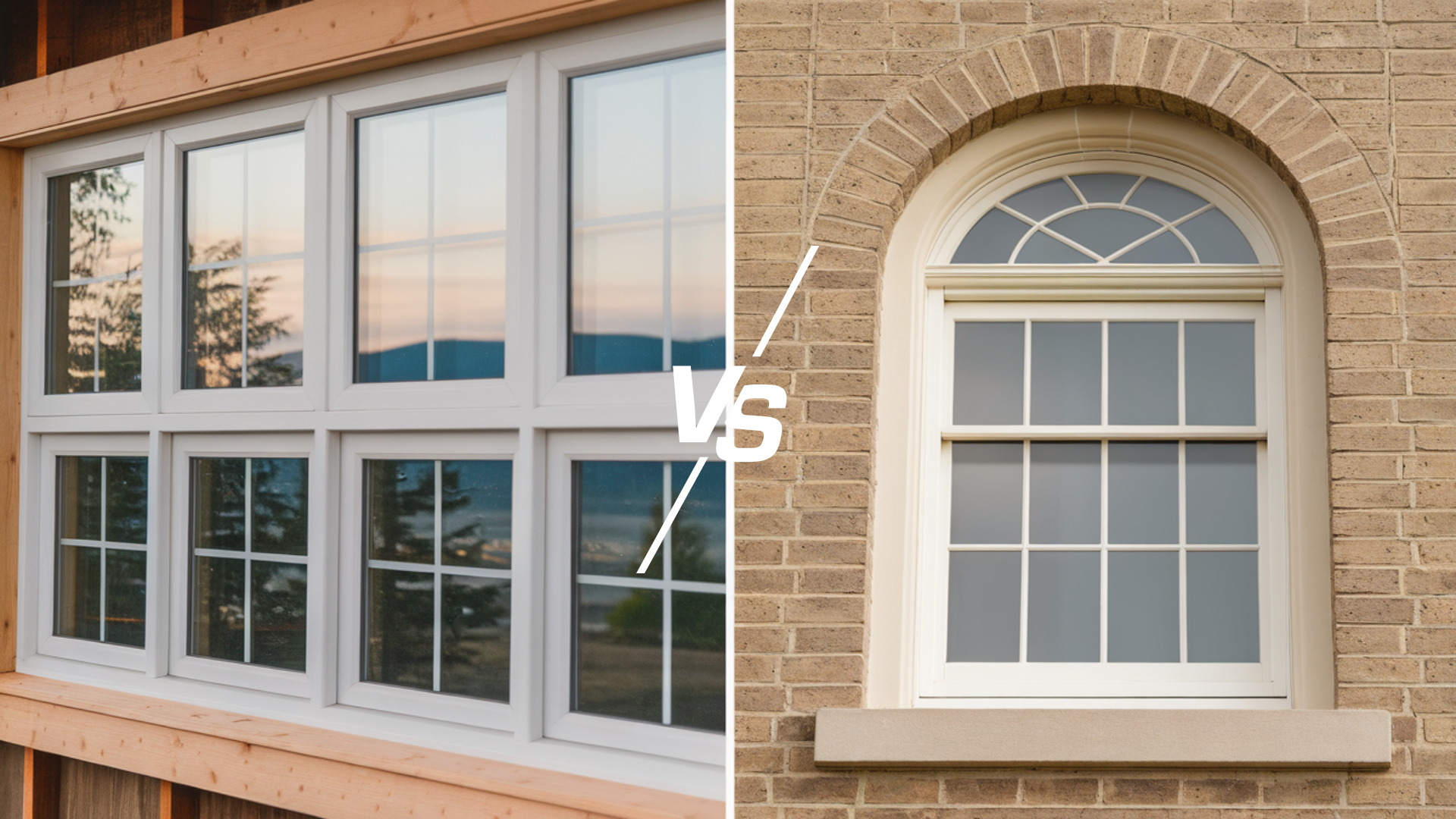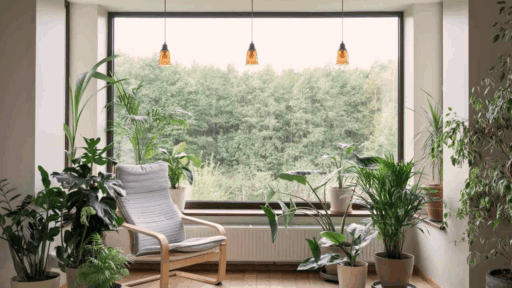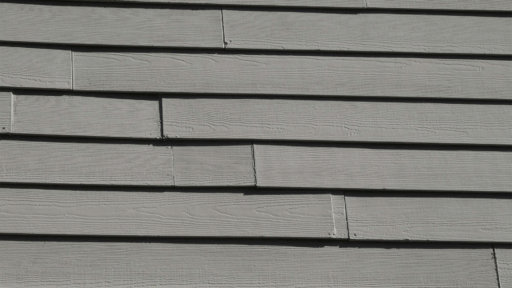When I started looking for new windows for my home, I was surprised by how many choices there were.
Two names kept coming up – fiberglass and vinyl. I didn’t know the difference at first, but I quickly learned that each type has its own pros and cons.
Some people like fiberglass for its strength and clean look. Others prefer vinyl because it’s cheaper and easy to take care of.
If you’re in the same boat I was, don’t worry. I’ve put together everything I learned in one simple place.
In this blog, I’ll walk you through the key differences between fiberglass and vinyl windows. I’ll discuss aspects such as durability, energy efficiency, cost, and aesthetics.
By the end, you’ll have a better idea of which one works best for your home and your budget.
Understanding the Basics: Fiberglass and Vinyl Windows
Before picking the right windows, it helps to know what fiberglass and vinyl windows really are. Both are popular choices, but they’re made from different materials and work in different ways.
Fiberglass windows are made from tiny glass fibers mixed with strong resin. That might sound fancy, but all it really means is they’re tough and built to last.
They can handle hot and cold weather without bending or breaking. Some even look like wood, which is great if you want a classic look without the upkeep.
Vinyl windows are made from a type of plastic called PVC. These windows are lightweight and don’t need much care.
They’re also one of the most affordable window options out there. You can’t paint them, but they come in a variety of colors to match your home.
Both are solid choices; it just depends on what you need most.
Key Features of Fiberglass vs Vinyl Windows

When I was shopping for new windows, I quickly learned that not all windows are made the same. The little details, like how long they last, how well they keep in heat, and how they look, really matter.
1. Durability
Durability was one of the first things I looked into. I didn’t want to replace windows again anytime soon, so knowing how long each type lasts really helped me make a smart decision.
Fiberglass windows are super strong. They can last up to 50 years if properly maintained. They don’t warp, bend, or crack easily, even when the weather changes fast.
Vinyl windows are strong, too, but they don’t last quite as long. Most last around 20 to 30 years.
They might warp in very hot weather or get brittle when it’s really cold. That can lead to tiny cracks or air leaks over time.
If you plan to stay in your home for a long time, fiberglass may be a better choice.
But if you’re looking for a solid option that still lasts a while and fits your budget, vinyl is worth considering.
2. Energy Efficiency
One of the biggest reasons I wanted to replace my windows was to lower my energy bills. I wanted windows that could keep my house warm in winter and cool in summer.
Fiberglass windows are excellent at keeping in heat or cool air. They don’t expand or contract much with the weather, which means they stay tightly sealed.
Some fiberglass frames even have extra insulation inside, which helps reduce your energy bills.
Vinyl windows do a good job, too, especially if you choose models with double or triple panes.
They help with insulation, but they can expand and contract more than fiberglass when the temperature changes. That can let a little air sneak through if the seals weaken over time.
If energy savings are your top priority and you want the best insulation year-round, fiberglass insulation might be the best choice.
However, if you want decent energy efficiency without spending too much, vinyl can still deliver good performance.
3. Aesthetic and Style
I didn’t just want my windows to work well; I also wanted them to look nice. Windows are part of your home’s style, and they should match your taste.
Fiberglass windows look sleek and modern. They have thinner frames, so you get more glass and light.
Plus, you can paint them if you ever want to change the color. Some fiberglass windows are even designed to look like wood.
Vinyl windows come in many colors, but you can’t paint them later. What you choose is what you’re stuck with.
Their frames are a bit thicker, so you might lose a little light. However, they still come in a variety of styles that suit most homes.
If you want a window that you can change the color of later, or one with a wood-like finish, fiberglass is the way to go.
However, if you’re okay with sticking with the same color and want something that still looks nice, vinyl is a solid choice.
4. Cost and Value
Let’s talk about money, because I sure did when I was window shopping. The price can be a big deal, especially if you’re doing your whole house.
Fiberglass windows usually cost more up front, sometimes double the price of vinyl.
However, because they last longer and use less energy, they can actually save money in the long run.
Vinyl windows are much more budget-friendly. They’re one of the cheapest window types out there.
Installation is usually easier and cheaper, too. Just keep in mind that you may need to replace them sooner than fiberglass.
If you’ve got the budget and want something that lasts a long time, fiberglass is worth the investment.
But if you’re working with a smaller budget or need windows fast, vinyl is a practical and affordable option.
5. Maintenance and Care
Another thing I considered was the amount of work required to keep the windows clean and functioning properly. Nobody wants to spend all weekend doing window maintenance.
Fiberglass windows don’t need much care. You might repaint them every so often if you want to freshen up the look, but that’s about it. They resist weather, fading, and damage really well.
Vinyl windows are known for being low-maintenance. You never have to paint them, and a simple wipe-down now and then keeps them looking good.
However, they can fade or become discolored over time, especially in extremely sunny areas.
If you want something that’s super easy to care for, vinyl is hard to beat. But fiberglass isn’t too far behind, and it gives you a little more flexibility with how it looks over time.
Choosing between fiberglass and vinyl windows comes down to what matters most to you.
I had to consider my budget, the duration of my stay in my home, and the amount of time I wanted to dedicate to caring for my windows.
Regardless of which one you choose, understanding the key features will help you make the right decision for your home.
Pros and Cons: Fiberglass vs Vinyl Windows
When I was choosing between fiberglass and vinyl windows, making a simple pros and cons list helped me decide. These easy tables can help you too.
Fiberglass Windows
Fiberglass windows are known for being strong and long-lasting. But like anything, they come with both good and not-so-good sides.
| Pros | Cons |
|---|---|
| Very durable – lasts up to 50 years | More expensive up front |
| Handles heat and cold really well | Fewer color options than vinyl |
| Can be painted to match your style | Needs professional installation |
| Slim frames let in more light | Not as widely available as vinyl |
| Great energy efficiency | May need repainting over time |
If you’re staying in your home long-term and want strong, energy-saving windows, fiberglass might be worth the cost. Just keep in mind it’s a bigger investment at the start.
Vinyl Windows
Vinyl windows are a popular choice for many homeowners. They’re easy to find and budget-friendly, but they do have a few downsides.
| Pros | Cons |
|---|---|
| More affordable than fiberglass | Can warp in extreme heat |
| Low maintenance – no painting needed | Shorter lifespan (20–30 years) |
| Easy to install | Fewer design options |
| Comes in many color choices | Color can fade over time |
| Energy efficient with double panes | Can look bulky due to thicker frames |
Vinyl is a great choice if you want to save money and don’t want to deal with upkeep. Just know that you may need to replace them sooner than fiberglass ones.
When to Use Fiberglass vs Vinyl Windows
Choosing between fiberglass and vinyl windows isn’t always easy, but knowing when each one makes the most sense can really help.
When to Use Fiberglass Windows

Fiberglass windows are a great choice if:
- You live in an area with harsh weather – hot summers, freezing winters, or lots of rain.
- You want something that lasts a long time and won’t need replacing for decades.
- You care about saving money on energy bills and want better insulation.
- You want to paint or customize the look of your windows over time.
- You plan to stay in your home for many years.
I picked fiberglass for my forever home because I wanted something strong and low-maintenance.
It cost more upfront, but I knew I wouldn’t have to worry about new windows for a very long time.
When to Use Vinyl Windows

Vinyl windows are the better option if:
- You’re working with a tighter budget but still want a good-quality window.
- You live in a milder climate where the weather isn’t too extreme.
- You want something that’s easy to clean and doesn’t need painting.
- You’re flipping a house, renovating a rental, or don’t plan to stay long-term.
- You want windows installed fast and with fewer extra steps.
I used vinyl windows on a rental property because they were affordable and still looked great. They didn’t need much upkeep, which made them perfect for that situation.
Can You Mix Fiberglass and Vinyl Windows?

Yes, you can mix fiberglass and vinyl windows in the same home, and it’s actually a smart choice for some people.
I considered doing this when I remodeled my house because each room had different needs.
For example, you might use fiberglass windows in the front of the house for a nicer look and longer-lasting frame, then choose vinyl windows in the back or basement to save money.
The key is to keep a consistent style and color so everything blends well. Most guests won’t even notice the difference.
Just make sure your installer knows how to work with both materials. Mixing windows can give you the best of both worlds: strength where it matters and savings where it counts.
Factors to Consider When Choosing Between Fiberglass and Vinyl Windows
Picking the right type means finding the balance between what you need and what works best for your home.
- Budget: Vinyl windows are more affordable up front. Fiberglass costs more but may last longer and save on energy over time.
- Climate: If you live in an area with very hot summers or freezing winters, fiberglass handles temperature changes better.
- Home Style: Want a modern look with more glass or a window that mimics wood? Fiberglass might be a better fit. Vinyl offers fewer style changes but still looks nice.
- Lifespan: Fiberglass windows can last up to 50 years. Vinyl windows usually last 20 to 30 years.
Choosing between fiberglass and vinyl windows isn’t just about what looks good. It’s about what fits your life, your home, and your budget.
I found that asking these questions really helped me narrow down what mattered most. Think about what works for you, and the right choice will become clear.
Conclusion
Picking between fiberglass and vinyl windows can feel like a big decision, but it really comes down to what matters most for your home.
Both options have their strengths. Fiberglass is tough, long-lasting, and great for energy savings. Vinyl is more affordable, easy to maintain, and still does a solid job.
If you’re staying in your home for years to come, fiberglass might be worth the higher cost.
But if you’re looking for a budget-friendly choice that still performs well, vinyl could be the better fit.
No matter which one you choose, you’ll end up with windows that make your home more comfortable and efficient.
Just take your time, weigh the pros and cons, and pick what works best for you.








